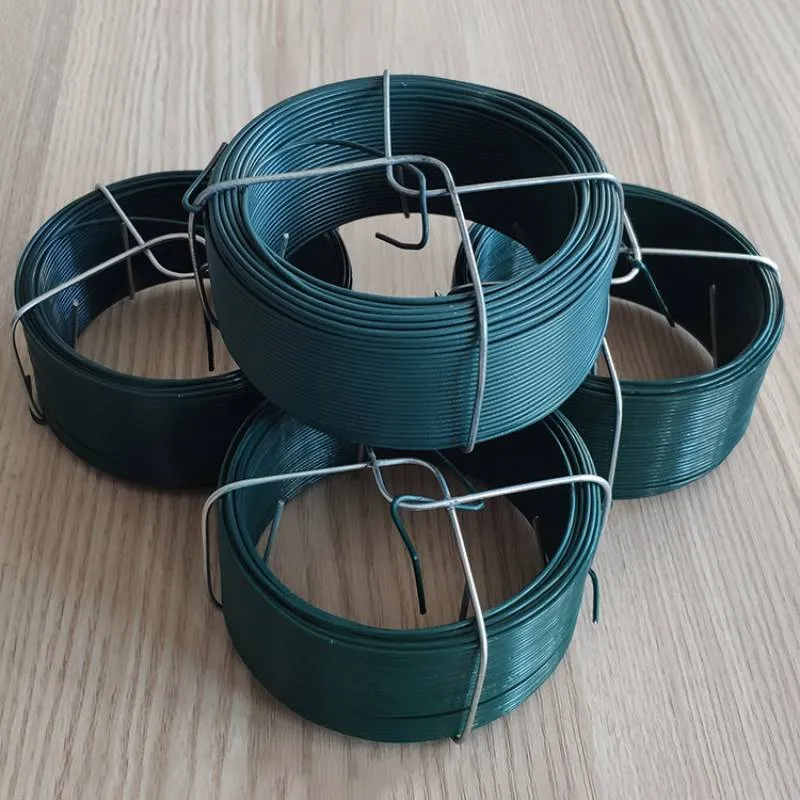-
 Phone:
Phone: -
 Email:
Email:

Understanding Baling Wire Gauge for Optimal Agricultural and Industrial Use
Understanding Baling Wire Gauge A Comprehensive Guide
In the world of agricultural practices, recycling, and waste management, the term baling wire often comes to the forefront. This essential material plays a significant role in securing bales of hay, straw, cotton, and other agricultural products, making it a staple in farm operations as well as in recycling plants. One crucial aspect that determines the effectiveness of baling wire is its gauge, a topic that deserves closer examination.
What is Baling Wire Gauge?
Baling wire gauge refers to the thickness of the wire used in the process of binding bales. The gauge measurement system is often distinguished by the American Wire Gauge (AWG) standard. This system assigns a numerical value to the diameter of the wire; the lower the number, the thicker the wire. For example, a 10-gauge baling wire is thicker than a 14-gauge wire. Understanding the gauge of baling wire is critical; it affects the strength, flexibility, and cost-effectiveness of the material.
Why Does Gauge Matter?
1. Strength and Durability The primary reason for choosing the correct gauge is to ensure your bales remain intact. Thicker wires, such as 10 or 12-gauge, are better suited for heavier loads and provide greater tensile strength, making them ideal for securing dense materials. Conversely, thinner wires may bend or break under excessive pressure.
2. Application Efficiency Different applications require different wire gauges. For example, agricultural operations involving heavy, moist hay often use thicker wire because it needs to withstand environmental factors and heavy weights. On the other hand, for lighter materials like paper or cardboard in recycling, thinner wire may suffice.
baling wire gauge

3. Cost-Effectiveness While thinner wire is generally less expensive, cutting corners can lead to reduced performance, resulting in potential losses of material if bales fall apart. Investing in the appropriate gauge may appear more costly at first, but it proves more economical in the long run by ensuring efficiency and reducing waste.
Other Factors to Consider
When selecting baling wire, gauge is not the only factor to consider. The material composition also plays a crucial role. Most baling wires are made from high-quality steel to ensure strength and resistance to abrasion. Additionally, coated wires are available, providing extra protection against rust and corrosion, which is particularly important for outdoor storage scenarios.
Handling and binding technique also affect performance. Operators need proper training to handle the bales appropriately and use tying methods that work best with the selected wire gauge. Incorrect use can render even the best-quality wire ineffective.
Conclusion
In summary, understanding baling wire gauge is essential for anyone involved in agriculture, recycling, or waste management. The correct gauge ensures that the bales remain secure, thereby maximizing efficiency and minimizing waste. While thicker wires provide enhanced strength and durability, it’s equally important to consider operational needs, material composition, and handling techniques.
Ultimately, investing the time and resources into choosing the appropriate baling wire not only contributes to a well-organized operation but also promotes sustainable practices. As we move forward, manufacturers and consumers alike must recognize the importance of this simple yet vital component in reinforcing the fabric of modern agriculture and waste management practices.
-
Wire Mesh for Every Need: A Practical SolutionNewsJul.25,2025
-
Steel Fences: Durable, Secure, and Stylish OptionsNewsJul.25,2025
-
Roll Top Fencing: A Smart Solution for Safety and SecurityNewsJul.25,2025
-
Cattle Farm Fencing Solutions for Maximum SecurityNewsJul.25,2025
-
Affordable Iron Binding Wire SolutionsNewsJul.25,2025
-
Affordable Galvanized Wire SolutionsNewsJul.25,2025
-
Wire Hanger Recycling IdeasNewsJul.25,2025








